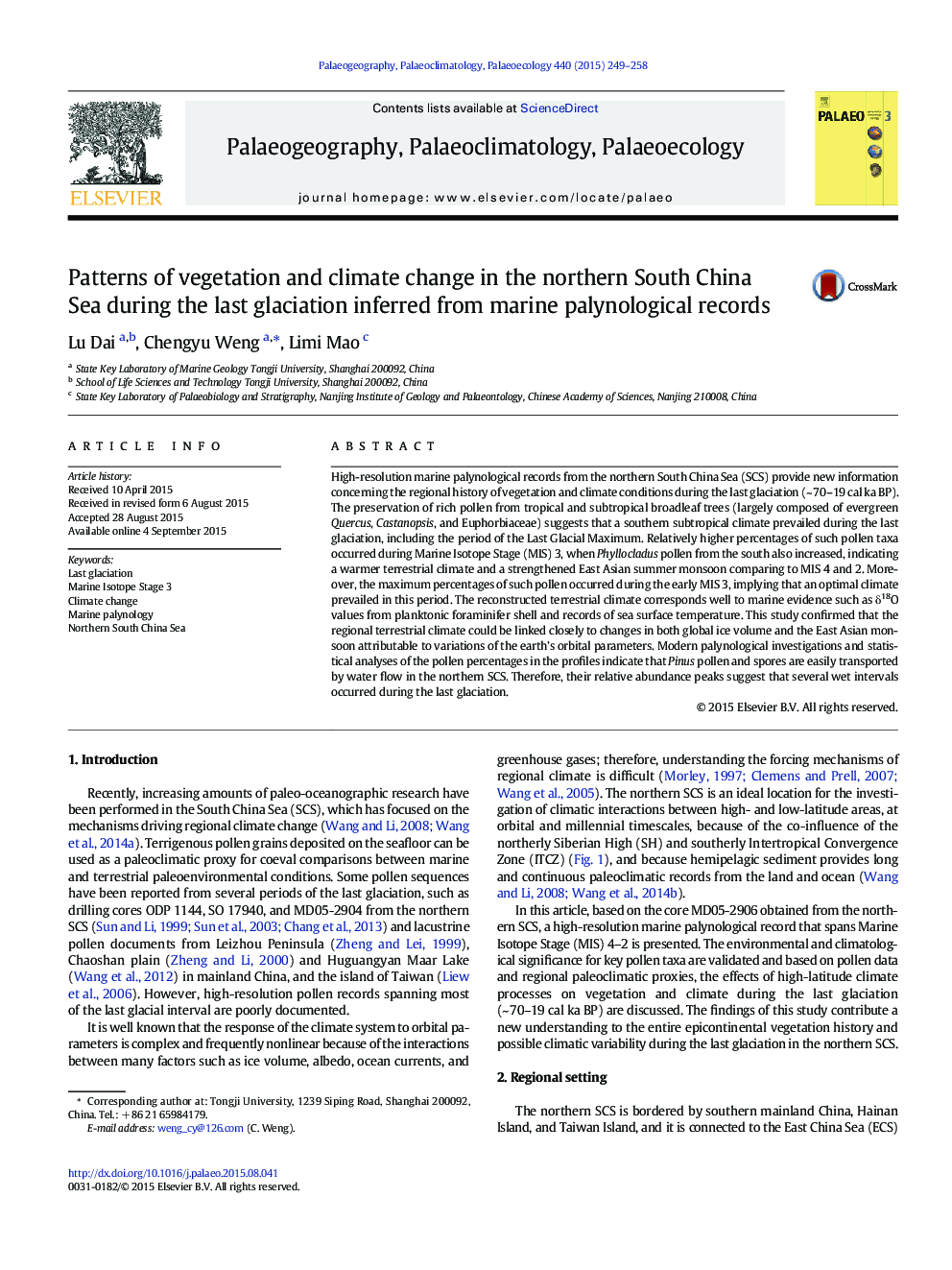| Article ID | Journal | Published Year | Pages | File Type |
|---|---|---|---|---|
| 6349511 | Palaeogeography, Palaeoclimatology, Palaeoecology | 2015 | 10 Pages |
Abstract
High-resolution marine palynological records from the northern South China Sea (SCS) provide new information concerning the regional history of vegetation and climate conditions during the last glaciation (~ 70-19 cal ka BP). The preservation of rich pollen from tropical and subtropical broadleaf trees (largely composed of evergreen Quercus, Castanopsis, and Euphorbiaceae) suggests that a southern subtropical climate prevailed during the last glaciation, including the period of the Last Glacial Maximum. Relatively higher percentages of such pollen taxa occurred during Marine Isotope Stage (MIS) 3, when Phyllocladus pollen from the south also increased, indicating a warmer terrestrial climate and a strengthened East Asian summer monsoon comparing to MIS 4 and 2. Moreover, the maximum percentages of such pollen occurred during the early MIS 3, implying that an optimal climate prevailed in this period. The reconstructed terrestrial climate corresponds well to marine evidence such as δ18O values from planktonic foraminifer shell and records of sea surface temperature. This study confirmed that the regional terrestrial climate could be linked closely to changes in both global ice volume and the East Asian monsoon attributable to variations of the earth's orbital parameters. Modern palynological investigations and statistical analyses of the pollen percentages in the profiles indicate that Pinus pollen and spores are easily transported by water flow in the northern SCS. Therefore, their relative abundance peaks suggest that several wet intervals occurred during the last glaciation.
Keywords
Related Topics
Physical Sciences and Engineering
Earth and Planetary Sciences
Earth-Surface Processes
Authors
Lu Dai, Chengyu Weng, Limi Mao,
